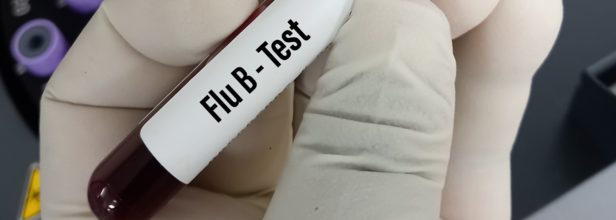- Health Conditions A-Z
- Health & Wellness
- Nutrition
- Fitness
- Health News
- Ayurveda
- Videos
- Medicine A-Z
- Parenting
- Web Stories
Millions At Risk As Chikungunya Virus Threatens Global Health, Warns WHO; Can A Mosquito Bite In Monsoon Trigger Severe Symptoms?

Credits: Canva
The World Health Organization (WHO) has issued a grim warning about a large-scale outbreak of the chikungunya virus is gaining speed—and the initial symptoms are ominously reminiscent. In comparison to the catastrophic 2004–2005 epidemic that started in the Indian Ocean region and later reached hundreds of thousands of people all over the world, WHO experts are calling on governments to take action before the same repeats itself.
Dr. Diana Rojas Alvarez, WHO’s technical lead for chikungunya, told reporters in Geneva that the virus is now being detected in 119 countries, putting 5.6 billion people at risk. The warning is not hypothetical. Already in 2025, regions like Réunion, Mayotte, and Mauritius have seen major outbreaks. In Réunion alone, nearly one-third of the population is estimated to have been infected.
What’s different this time is the potential for global scale and speed, thanks to interconnected travel, shifting climates, and growing populations of virus-carrying mosquitoes. And while the name “chikungunya” may not be widely known outside scientific circles, its impact can be life-altering—if not deadly.
Why Is Chikungunya Dangerous?
Chikungunya is a mosquito-borne viral illness caused by the chikungunya virus (CHIKV), typically transmitted by Aedes aegypti and Aedes albopictus, the same mosquitoes that spread dengue and Zika viruses. These insects bite mostly during the daytime with peak activity in the morning and late afternoon.
The virus causes sudden onset of high fever, intense joint pain, headaches, rash, and muscle aches. The joint pain can become so severe that it bends sufferers into contorted postures—an origin of the disease’s name, which comes from a Makonde word meaning “that which bends up.”
While the majority of patients recover within a week, some symptoms—particularly joint pain—can persist for months or even years. In rare cases, chikungunya can cause neurological, cardiac or ophthalmic complications. Newborns, older adults and those with chronic medical conditions face a higher risk of severe disease or death.
Although the case fatality rate remains under 1%, WHO warns that large-scale outbreaks could mean thousands of deaths, especially in countries with under-resourced health systems.
According to WHO, the trajectory of the current outbreaks strangely mirrors that of the 2004–2005 epidemic. It began in small island nations before spreading across the Indian Ocean and into Asia, Africa and beyond. Today, similar trends are being observed with:
- Réunion has reported over 51,000 cases as of May 2025
- Mayotte, another French territory, has recorded 560 cases, pushing it into an epidemic phase
- Madagascar, Somalia, and Kenya are now reporting new clusters
- South Asia is experiencing epidemic-level transmission
- France has confirmed 30 local cases across 12 regions, with the largest cluster in Salon-de-Provence
- Italy reported its first locally acquired case since 2017 in Piacenza
Even countries like Portugal have reported dengue and chikungunya cases in 2025, highlighting how climate change and international travel are making vector-borne illnesses harder to contain.
Dr. Rojas Alvarez emphasized, “We are raising the alarm early so countries can prepare early—strengthening detection, prevention, and response systems is key.”
Why Europe and the US Should Pay Attention?
For decades, chikungunya was seen as a “tropical” disease, limited to warmer parts of Asia, Africa, and the Americas.
The Aedes albopictus, or tiger mosquito, is expanding its range northward due to warming temperatures and human-driven climate change. These mosquitoes have already become established in parts of southern Europe and even the southeastern United States. And with imported cases from travelers on the rise, localized outbreaks are becoming increasingly plausible.
The European Centre for Disease Prevention and Control (ECDC) recently launched updated guidance on mosquito-borne illnesses and emphasized the growing risk of local transmission. In addition to chikungunya, local dengue cases have been reported in Italy, France and Portugal in 2025.
How Can People Protect Themselves?
There’s no antiviral treatment for chikungunya, and supportive care—hydration, rest, and pain relief—is the mainstay of treatment. That makes prevention the most powerful tool. The WHO and ECDC recommend the following steps:
- Use mosquito repellents with DEET or picaridin on skin and clothing
- Wear long sleeves and pants, especially during mosquito-active hours
- Install screens on windows and doors, and use insecticide-treated mosquito nets when sleeping
- Empty standing water from containers like buckets, pots, and old tires, where mosquitoes lay eggs
- Avoid outdoor activity during early morning and late afternoon, especially in outbreak zones
Has Vaccine Become The New Line of Defense?
In a significant step, UK has approved a chikungunya vaccine which contains a weakened version of the virus that trains the immune system to produce antibodies. The vaccine is prescription-only and is currently recommended for people traveling to high-risk areas. However, it is not without limitations. The Commission on Human Medicines has advised caution in people aged 65 and older, pending further evaluation.
Until now, all we had were repellents and mosquito nets. With this vaccine, people who travel frequently or live in endemic areas now have another layer of protection. Still, experts advise travelers to assess their personal risk. If you're taking a one-off trip to France, your risk is low but if you're planning repeated travel to areas with outbreaks, vaccination may be worthwhile.
Does Climate Change Affect Incidence Rate?
Chikungunya and other mosquito-borne diseases are moving into new regions and our global health systems are scrambling to keep up. The convergence of climate change, urbanization, and international mobility is creating the perfect storm for diseases like chikungunya, dengue, and Zika to flourish.
As WHO warns, the time to act is now. That means not only educating the public and travelers but also investing in surveillance, vector control, and vaccine distribution especially in lower-income countries where health infrastructure is fragile. In 2005, the world was caught off guard and in 2025, we don’t have that excuse.
World IVF Day: What Makes The IVF Journey So Hard On The Mind?

In vitro fertilisation (IVF) is not just about science, syringes and success rates. What lies behind the walls of fertility clinics is a deeply personal journey filled with hope, heartbreak and resilience, making it more than just a medical procedure. Beyond the social taboos, infertility brings huge stress to the patients. And while IVF offers hope, it does not come easy. It is a rollercoaster ride that patients experience as they take on the road to this procedure; highs and lows can take a severe mental toll on them.
However, for those unversed, infertility has been classified by the World Health Organisation as a disease like diabetes or hypertension; the social taboo around it still persists. Over the years, advancements in reproductive science have made IVF treatments more patient-friendly and significantly improved outcomes. Yet, the focus often leans heavily on science, expertise and clinic proficiency, while the mental and emotional toll on the couple is overlooked.
For many, the psychological impact of IVF can match that of the death of a family member or going through a divorce. Although many people find IVF very stressful, every patient experiences it differently. Personalities and life experiences play a big role in determining how one handles the process and what part of IVF they find most difficult.
Why Is IVF So Emotionally Draining?
We ask an expert to break down several key factors that contribute to the immense stress IVF brings:
- Uncertainty of Outcomes
- Physical Strain
- Societal Pressure
- Guilt and Shame
- Depression After Failed Attempts
- Relationship Strain
Learning to Cope with Support Systems That Help
There is light at the end of the tunnel, and as Dr Saple says, there are several strategies that can help couples better cope with the IVF process.
- Psychological Counselling
- Support Groups
- Mind–Body Practices
Setting Realistic Expectations
“IVF may take more than one cycle to succeed,” she explains. Being mentally prepared for the outcome, while knowing you have done your best, helps couples accept results with resilience.
It is Okay to Ask for Help
As Dr Saple reminds us, mental and emotional health are as important as physical health during IVF. Prioritising emotional wellbeing not only makes the journey more bearable but can also improve the overall outcome. “Seeking help is a sign of strength, not weakness,” she says.
Family Urges Flu Vaccination After 8-Year-Old's Near-Fatal Influenza B Fight

Credits: Canva
Millie Campbell was just eight years old in 2019 when a missed flu shot turned into a life-threatening ordeal, notes ABC News, Australia. What began with aches in her legs soon escalated into multiple organ failure caused by influenza B, a virus her parents never imagined could be so severe.
“They had to drain 200 millilitres of fluid from her heart, it was struggling,” her mother Stephanie Campbell recalled. “I think the doctor's words were: ‘Your daughter could die tonight’.”
Millie was airlifted from Newcastle to Westmead Children’s Hospital in Sydney, reports ABC News. Soon after arriving, she went into cardiac arrest. Her father, Ian Campbell, described the scene as surreal. “There was no indication she was going to survive,” he said.
A Long Road to Recovery
Millie, previously fit and healthy with no pre-existing conditions, spent weeks in intensive care and six months in hospital. The damage from being on life support for so long led to poor circulation, and eventually, doctors had to amputate her left foot.
She had to learn to walk again. Today, reports ABC News, Millie uses a prosthetic leg and has turned to swimming not just for rehabilitation, but as a passion, one that has taken her to national championships and World Trials. Her eyes are now set on the 2028 Paralympics in Los Angeles.
“Millie’s recovery will be a lifelong journey,” Ms Campbell said. “Seeing how severe the flu can be, our message is: talk to your medical practitioner about the vaccine.”
Why Influenza B Is Hitting Children Hard
Although influenza A typically gets more public attention due to its pandemic potential, Australia has seen a sharp rise in influenza B cases, especially in children aged 5 to 16. According to Professor Patrick Reading from the World Health Organization (WHO) Collaborating Centre for Influenza Research, type B can often be more severe in children, though the reason remains unclear.
“It's a bit of a mystery,” Professor Reading told ABC News. “We see this association, but we can't say there's something specific about the virus that causes it to affect children more.”
Vaccination rates among this age group are currently the lowest of all, following a steady decline since the COVID-19 pandemic. Professor Reading warned that fading immunity, combined with lower vaccine uptake, is placing a burden on the healthcare system.
“We're not through the worst of it yet. Flu circulation continues through August to October,” he added. “It’s not too late to get vaccinated.”
Confusion Around Flu Vaccine Access
Millie’s parents said they’d always kept up with her vaccinations. But once she turned five, they mistakenly believed the flu wasn’t a major risk anymore.
Under the National Immunisation Program (NIP), the flu vaccine is free only for children aged six months to five years, people over 65, and other vulnerable groups.
In contrast, states like Queensland and Western Australia are temporarily offering free vaccines to all residents, a move public health experts say should be adopted nationally.
Julie Leask, a vaccination policy expert from the University of Sydney, told ABC News, the current risk-based model isn't working. “When a vaccine is on the NIP, it sends a strong message that it's important,” she said. “Some doctors still wrongly advise against it for kids.”
Misinformation and Vaccine Hesitancy
Falling childhood vaccination rates, rising anti-vaccine sentiment, and misinformation, especially on social media, have complicated public health efforts.
Professor Leask pointed to anti-vaccine rhetoric, such as that from US politician Robert F. Kennedy Jr., as a growing influence in Australia. Kennedy has falsely linked vaccines to autism and recently pushed against COVID-19 vaccinations for children and pregnant women.
“We’re seeing the mainstreaming of misinformation,” Leask warned. “It’s having a ripple effect here too.”
Research shows common reasons parents skip the flu shot for kids include a lack of awareness, absence of a healthcare provider recommendation, time constraints, cost, and safety concerns.
A Family’s Call to Action
As Millie thrives in her new life, her parents remain vocal about the importance of vaccination.
“This growing hesitancy is driven by people struggling to tell the difference between facts and misinformation,” Mr Campbell said. “Most people spend more time on social media than listening to experts, but that’s not where you should be getting your health advice.”
“Vaccination protects not just your child but the whole community.”
The Hidden Turmoil: Why Our Youth Are Quietly Crumbling and What We Can Do About It

In an age of endless scrolling, instant likes, and constant comparison, the mental health of young people is taking a nosedive and fast. The rise in depression, anxiety, self-harm, suicide, and behavioural disorders has exploded in recent years, especially in the wake of the COVID-19 pandemic. Yet, the real tragedy is often hidden behind filtered selfies and people who aren't paying attention.
Quoting the World Health Organisation, Dr. Monica Sood shares that one in seven adolescents between the ages of 10 and 19 globally suffers from a mental health problem. Suicide is the fourth most common cause of death among teens. In India, the numbers are no less harrowing—“a student kills themselves every hour,” says the National Crime Records Bureau.
This is a generation supposedly poised to “have it all”, but as Dr. Sood says, they’re instead buckling under immense pressure, from academic demands and the need for social validation to competition with peers, family expectations, and uncertainty about the future.
While awareness is slowly improving, Dr. Sood laments that “conversations about youth mental health are still clouded by stigma, cultural denial, and a lack of resources.” Therapy remains a luxury, school counselling is scarce, and what should be called burnout has been normalised as digital fatigue.
The Root Causes Go Beyond Exams
Dr. Sood argues that to truly address the crisis, we need to dig deeper. “We need to realise that the crisis is more than just schoolwork or screen time.” Instead, it’s the result of a complicated mesh of factors:
- Unrealistic expectations from society: The pressure to be perfect in every way is, in Dr. Sood’s words, “a psychological war zone.”
- Dysfunctional families: Emotional unavailability, abuse, neglect, and overcontrol can deeply harm a child’s sense of self.
- Lack of emotional vocabulary: Many young people don’t have the words to express what they’re feeling. Instead, their pain shows up as anger, withdrawal, or substance abuse.
- Unfiltered digital exposure: Curated lives on social media fuel jealousy, insecurity, and body image issues.
- Loss of spiritual and community ties: “The feeling of being part of something bigger is fading,” warns Dr. Sood.
A Mental Health Renaissance
But all is not lost. Dr. Sood lays out a refreshingly bold and unconventional action plan for what she calls a mental health renaissance—one that starts in schools and ends in society-wide reform.
Mindfulness and Emotional Literacy in the Curriculum
Dr. Sood urges schools to teach children how to manage their emotions just as they teach math. Weekly lessons in emotional intelligence, stress management, and nonviolent communication should begin from Class 1. “Add art therapy, journaling, breathing exercises, and storytelling,” she suggests, to make these lessons stick.
Empathy Ambassadors in Every Institution
Dr. Sood calls for a peer-led model of support—“Every school, college, and university should choose and train a few older students or peers to be ‘Empathy Ambassadors’.” These students should be trained to listen, maintain confidentiality, and support others in crisis. Sometimes, peer support can be more approachable than formal therapy.
Digital Detox Sabbaticals
“We fast for our bodies; we should fast for our minds too,” Dr. Sood says. She recommends monthly ‘silent days’ in schools and families—no screens, no judgements, just fun, creativity, and nature.
Rebuilding Sacred Third Spaces
Beyond home and school, young people need judgement-free zones to simply exist. “Think of libraries, community centres, and parks as ‘mental sanctuaries’,” says Dr. Sood. These could host music corners, open mic nights, and wellness cafés.
Combining AI, Ayurveda, and Psychology
Dr. Sood’s final suggestion marries ancient Indian wisdom with modern science—“Use Ayurvedic mind-body typing, psychometric tests, and AI-based behavioural tracking to make personalised mental health plans.” She envisions a future where technology aids rather than overwhelms, offering tailored, holistic mental health solutions.
© 2024 Bennett, Coleman & Company Limited

